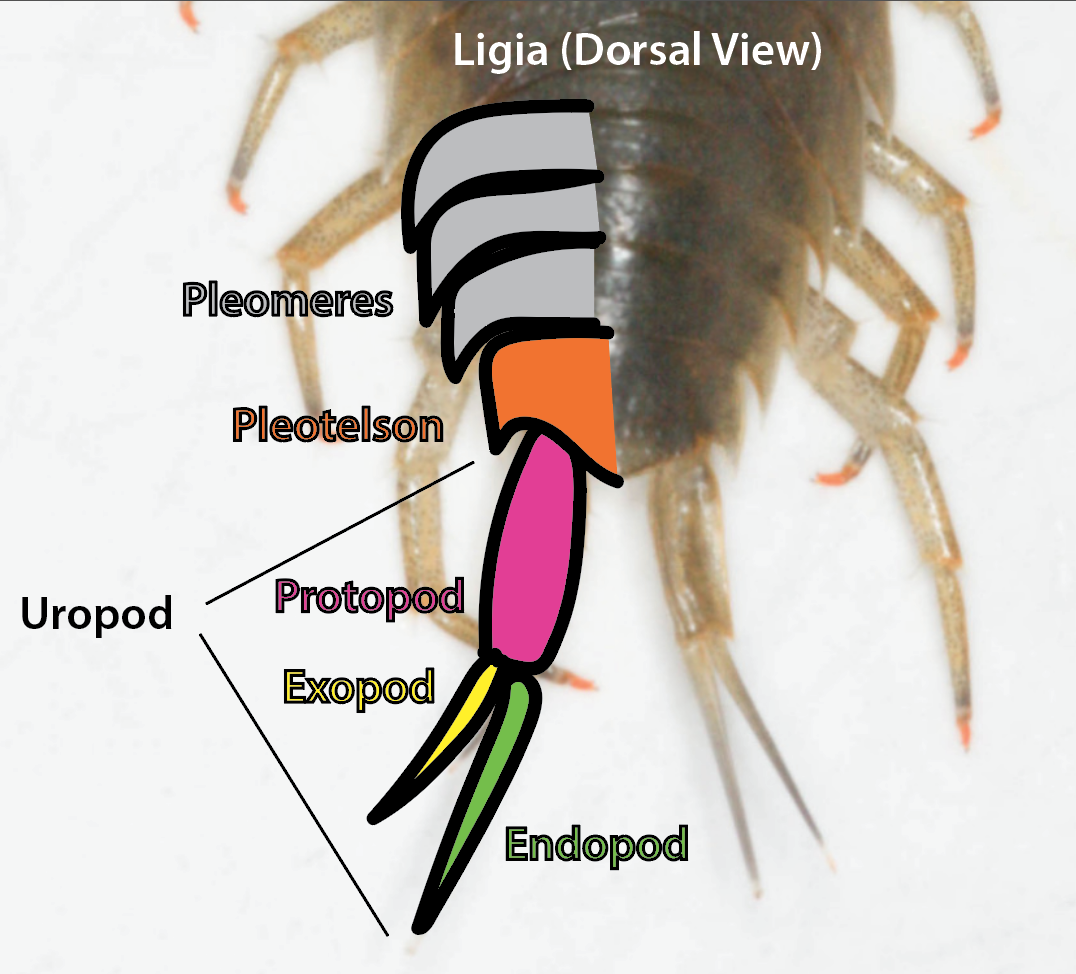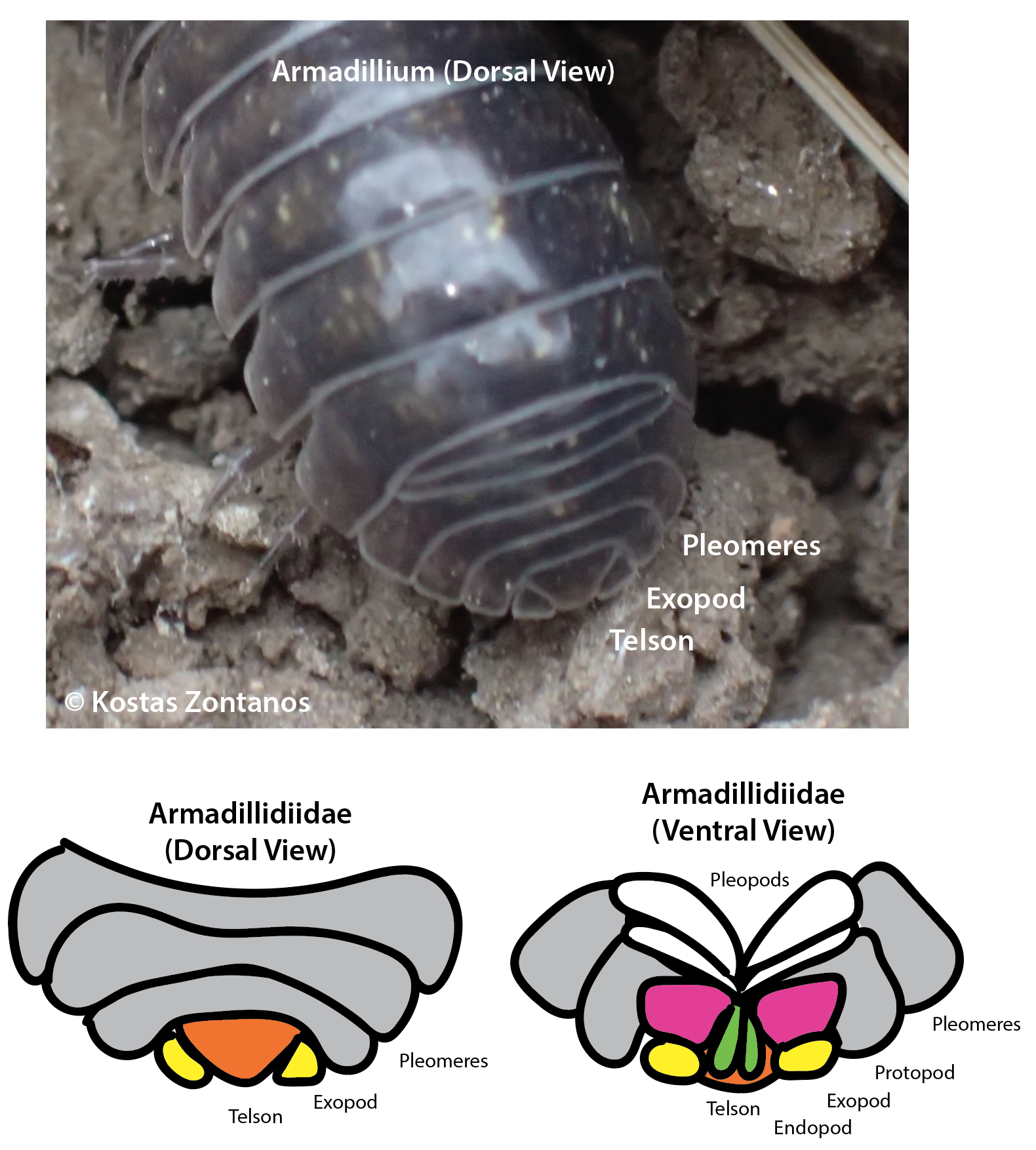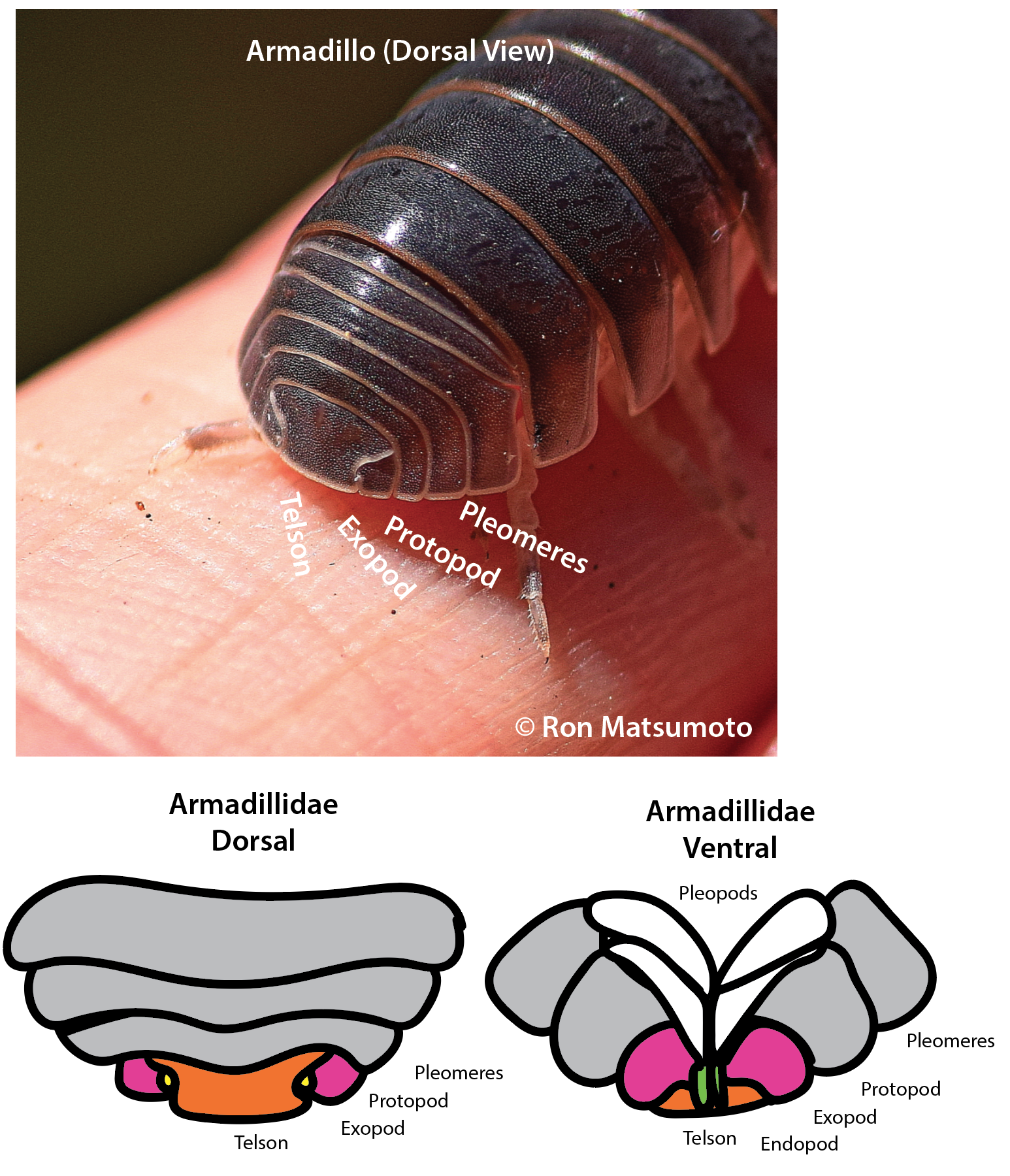Identification tips: Armadillidae vs. Armadillidiidae
One of the best characters for identifying Isopods like Woodlice are the 'pointy butt parts' (uropods). They are made up of a 'stalk' (protopod) with two 'branches' (the endopod and exopod). Woodlice with pointy butts have uropods that extend past the 'butt end' (telson)

Most woodlice without pointy butts (ie those with uropods that don't extend out past the telson) belong two two families - the very similarly named Armadillidae and Armadillidiidae.
The Armadillidiidae includes the ubiquitous Common Pill Bug (Armadillium vulgare). The Armadillium genus has been introduced around the world and make up >1/3 of all the Woodlice observations on iNaturalist at the moment.
The other family (the Armadillidae) is much less common in North America and Europe where it is generally represented by a few rare and localized species (e.g. Armadillio in Europe and Venezillo in North America). There are a few widespread marine species like Cubaris which occur in Hawaii and Florida. And in other parts of the world like New Zealand the Armadillidae are extremely diverse and common.
While these two families can superficially look remarkably similar (definitely a striking examples of convergent evolution), the structure and arrangement of the uropods relative to the telson is actually quite distinct.
In Armadillidiidae, looking from the top down (dorsal view) the telson (orange) is trapezoidal shaped and the visible parts of the uropods are the exopods (yellow). The other parts of the uropods (pink and green) aren't visible from this dorsal view.

In Armadillidae, looking from the top down (dorsal view) the telson (orange) is hourglass shaped and the visible parts of the uropods are the protopods (pink). The exopods (yellow) are minute if visible at all.

In summary, if you are unsure whether you have Armadillidiidae or Armadillidae, make sure you get a picture of the butt end from the top down (dorsal view) to see whether the telson (orange) is trapezoidal (Armadillium etc.) or hourglass (Armadillio, Venezillo etc.) shaped, and whether the largge visible parts of the uropods are the exopods (yellow) (Armadillium etc.) or the protopods (pink) (Armadillio, Venezillo etc.).






Comentarios
Nice guide! The difference demonstrated here is much, much more subtle than I would like. I would have been hesitant even with your great diagrams: https://static.inaturalist.org/photos/20344890/large.jpeg
Looks like the exopods are best here?
Super helpful! Thanks.
Good stuff -- I'll be linking to this often.
Thank you. what a great resource. Sign up just to thank you
thanks @jaystarr!
Agregar un comentario